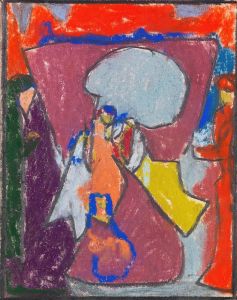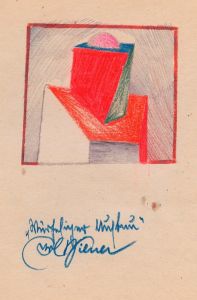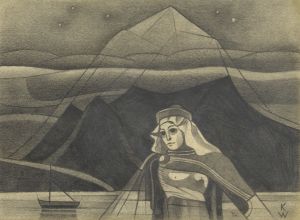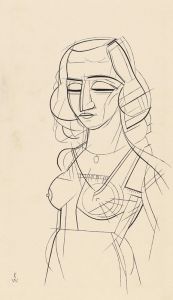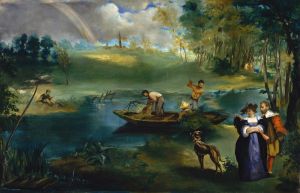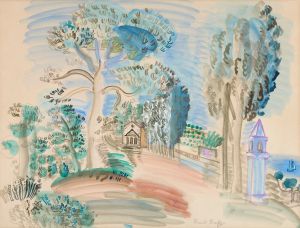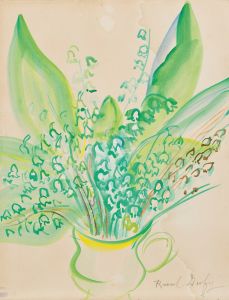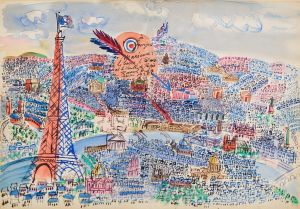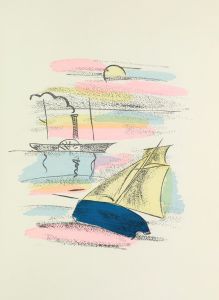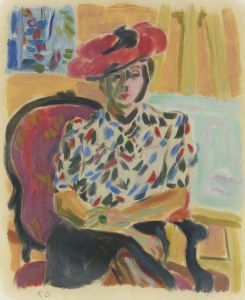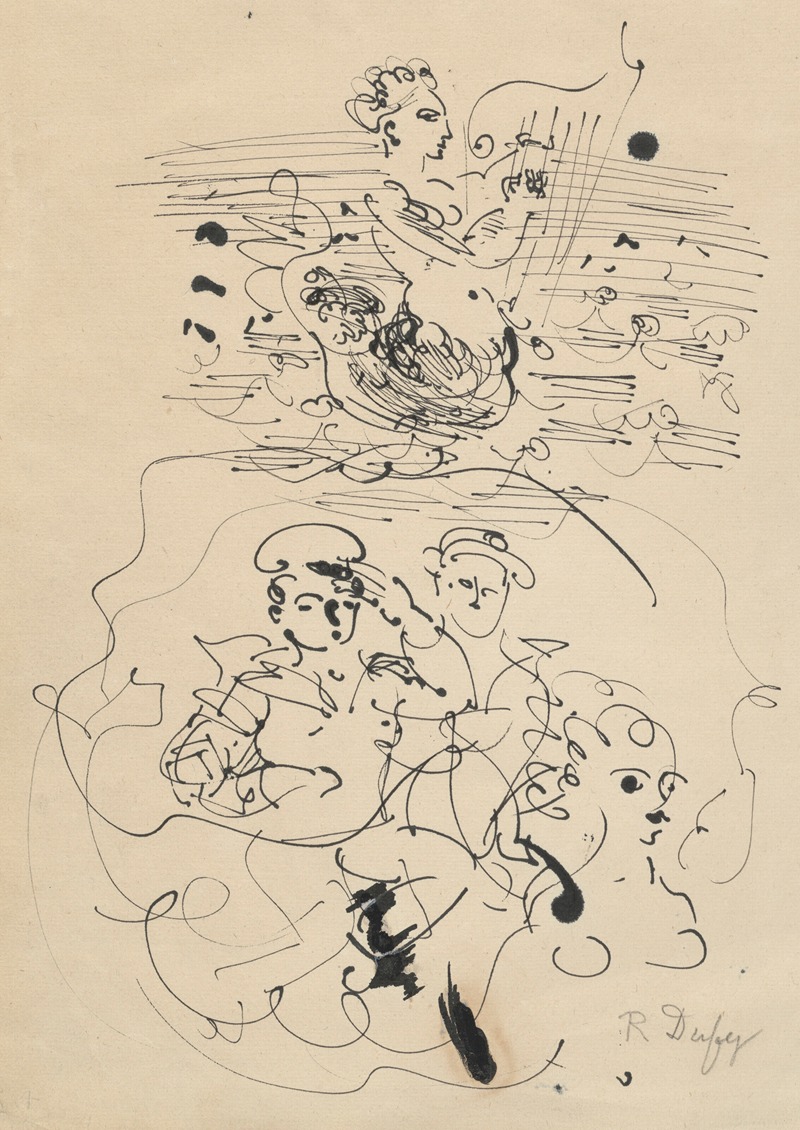
Amphitrite
A hand-painted replica of Raoul Dufy’s masterpiece Amphitrite, meticulously crafted by professional artists to capture the true essence of the original. Each piece is created with museum-quality canvas and rare mineral pigments, carefully painted by experienced artists with delicate brushstrokes and rich, layered colors to perfectly recreate the texture of the original artwork. Unlike machine-printed reproductions, this hand-painted version brings the painting to life, infused with the artist’s emotions and skill in every stroke. Whether for personal collection or home decoration, it instantly elevates the artistic atmosphere of any space.
Raoul Dufy, a prominent French Fauvist painter, created the artwork "Amphitrite" during his prolific career in the early 20th century. Dufy is renowned for his vibrant use of color and his ability to capture the essence of leisure and joy in his works. "Amphitrite" is a testament to his unique style, characterized by bold colors and fluid lines, which convey a sense of movement and vitality.
Amphitrite, in Greek mythology, is the goddess of the sea and the wife of Poseidon. Dufy's depiction of Amphitrite reflects his fascination with mythological themes and his ability to blend them with modern artistic expressions. The painting showcases Dufy's signature style, where he combines elements of Fauvism with his own distinctive approach to color and form. His use of bright, contrasting colors and loose brushwork creates a dynamic composition that captures the viewer's attention.
Dufy's work often draws inspiration from the Mediterranean, and "Amphitrite" is no exception. The painting likely reflects the influence of the Mediterranean landscape and culture, which Dufy frequently visited and admired. His ability to capture the light and atmosphere of the region is evident in the vibrant hues and lively composition of "Amphitrite."
Throughout his career, Dufy was associated with the Fauvist movement, which emphasized painterly qualities and strong color over representational or realistic values. Although "Amphitrite" is not one of his most famous works, it embodies the principles of Fauvism and showcases Dufy's skill in using color to evoke emotion and movement. His work is often described as joyful and optimistic, qualities that are evident in the lively depiction of the sea goddess.
Dufy's artistic journey began in Le Havre, France, where he was born in 1877. He studied at the École des Beaux-Arts in Paris, where he was influenced by the works of Impressionists and Post-Impressionists. His early works were heavily influenced by the Impressionist style, but he later embraced Fauvism after being inspired by the works of Henri Matisse and other Fauvist artists.
In addition to painting, Dufy was also a prolific illustrator and textile designer. His diverse body of work includes ceramics, murals, and prints, showcasing his versatility as an artist. Despite facing health challenges later in life, Dufy continued to create art until his death in 1953.
"Amphitrite" is a reflection of Dufy's ability to blend mythological themes with modern artistic techniques, resulting in a work that is both timeless and contemporary. His innovative use of color and form has left a lasting impact on the art world, and his works continue to be celebrated for their vibrancy and joie de vivre.





